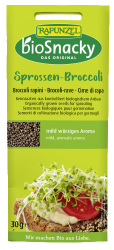Some general points to consider when it comes to selecting oils
When it comes to oils, there are a few important general points I want to cover first and foremost.
If you’re ever in any doubt, the main thing to remember is that quality is key and, even when certain types of oils which are shunned, there are often still exceptions to the rule. Some things to look out for are oils held in big industrial-looking plastic vats which suggest the oils have been produced in mass and are more likely to be highly processed.
Next, terms such as ‘cold-pressed’, ‘organic’ and ‘virgin’ are ones to look out for and suggest that oils have been produced with a little more care, however, that isn’t to say that these should still be used all across the board. Many cold-pressed oils don’t have a high smoke point which means they shouldn’t be used for high temperature cooking, or their nutrition profile and taste can soon change. The aim is to select healthier oils but also try and maintain those beneficial qualities as we use them in our cooking – and that’s why I’m here to help!
Now, that just about covers the basics, so now let’s delve a bit more into the nitty gritty and explore which oils are best for what.
Best to cook with
1 - Coconut oil
Coconut oil has come into the spotlight in recent years and for good reason. It’s been used by some of the healthiest communities in the world for centuries, and this is as good a reason as any to include some in your diet! The intuition of many of these more traditional cultures really is the best. Coconut oil has a high smoke point so, can be used in high temperature cooking such as stir-frying and it adds a lovely taste; even to the most unassuming dishes!
Fatty acid profile
Coconut oil is highest in saturated fatty acids but this shouldn’t necessarily be shunned. The difference is that these are plant-based fatty acids, and coconut oil is particularly rich in a specific type of fatty acid called medium-chain triglycerides. These have been shown to have a number of promising effects in research on metabolism and weight balance.1,2
Top tip:
Even the virgin, raw varieties can be used in high temperature cooking and you’ll be happy to know that they’ve had minimal processing!
2- Avocado oil
Much like the popularity of avocados in recent years, this oil is following suit and making more of an appearance on our shelves. Avocado oil also has a high smoke point so it’s another great option for high temperature cooking. However, research suggests it may not only have a beneficial influence on our cholesterol levels (bonus) but it may also help to enhance the absorption of other important nutrients when used in salads3 – so it’s a super versatile, healthy pick!
Fatty acid profile
Avocado oil is highest in heart-healthy monounsaturated fatty acids (namely omega-9), but it also has a good content of plant based saturated fats and polyunsaturated fats too – an all-round, well-balanced choice!
Top tip:
Avocado oil has a mild, pleasant flavour but it can be quite pricey so don’t use it alongside other bold flavours where the taste may be lost.
3 – Extra virgin olive oil
Yes, contrary to popular belief, for everyday cooking, virgin or extra virgin olive oil is still a good option. Although it doesn’t have the highest smoke point of all the oils, it’s still high enough to withstand sautéing and medium-heat cooking. Then, for higher temperate cooking such as stir-frying, I’d stick to your coconut oil or avocado oil options instead.
Fatty acid profile
Olive oil has one of the highest monounsaturated fatty acid profiles. Omega-9 has a number of health benefits and is one of the main constituents of the Mediterranean cuisine – one of the world’s healthiest diets!
Top tip:
Although there’s some debate around using olive oil in cooking, research has shown that it’s a preferable choice4,5 and people all around the world certainly don’t hold back – so get on board!
Best to drizzle
1 - Extra virgin olive oil
Yes, it’s featuring twice – because it’s just too good! Extra virgin olive oil (often abbreviated EVOO in the restaurant scene nowadays) comes from the very first pressing of olives, meaning it is more flavoursome and less refined than lighter versions that you’ll often see. For this reason, you should enjoy lapping up the full spectrum of antioxidants (and delicious taste) by using it in cold dishes, but it can safely be used in medium-heat cooking too5!
Fatty acid profile
EVOO is highest in omega-9 which constitutes up to around 80% of its’ fatty acid profile!
Top tip:
Store your EVOO in a cool, dark place to help preserve that omega-9 goodness.
2 - Flaxseed oil
Flaxseed oil is a fantastic source of omega-3 fatty acids and is a great alternative to fish oils for any vegetarians or vegans out there looking to get your anti-inflammatory, omega-3 fix. Due to the delicate structure of the polyunsaturated fatty acids it shouldn’t be used in cooking and instead it should just be drizzled and added to foods cold.
Fatty acid profile
Boasting an impressive omega-3 content, flaxseed oil is richest in polyunsaturated fatty acids, but it also has a good content of omega-9 in there too.
Top tip:
A great way to boost the omega-3 content of any meal, you should keep your flax oil in the fridge once opened.
3 – Hemp seed oil
Hemp products have shot up in popularity in recent years and it seems this plant has indeed, lots to offer! Hemp protein has an impressive amino acid profile, CBD oil is becoming renowned for its unique therapeutic properties and hemp seed oil is certainly not one to be missed either with its fantastic omega-3 and omega-6 profile!
Fatty acid profile
Hemp oil arguably has one of the most impressive fatty acid profiles of all, with a good balance of omega-3, 6 and 9. The omega-3 and 6 fatty acids, in particular, are found naturally occurring in the optimal ratio of 1:4.
Top tip:
Super versatile, this mildly nutty taste can be added to sweet or savoury dishes – perfect in everything from salads to smoothies whilst you can be sure you’re getting your fix of essential fatty acids.
4- Walnut oil
Not so well known, but walnut oil is definitely within my top picks of oil to get drizzling with. Unsurprisingly, good quality walnut oils have a pleasant nutty taste and go particularly nice with fish and wholegrain salads.
Fatty acid profile
Walnut oil is highest in linoleic acid, a good quality omega-6 fatty acid at just over 50%, but actually, it also has a good spectrum of other fatty acids including omega-3 and 9.
Top tip:
Don’t be tempted to cook with it (the higher polyunsaturated fat content doesn’t allow for this) but use this oil to inject some flavour to your dishes instead. Make sure to keep it in the fridge once opened.
Best to limit!
1 - Sunflower oil
Sunflower oil gets a bad rap, and it’s really because our diets are generally so heavy on omega-6 already, that the nutritive profile of this oil isn’t quite so attractive. Plus, generally these oils are more refined and more cheaply made, but better quality versions are still available!
Fatty acid profile
Highest in omega-6 fatty acids, you can often get a better balance of fatty acids from other types of oils.
Top tip:
Whilst the large plastic drums of refined sunflower oil aren’t the best option, you can still get better quality sunflower oils suitable for cooking. Look out for organic, cold-pressed varieties as much as possible.
2 - Rapeseed oil
Rapeseed oil and canola oil – the names are often used interchangeably and over the years they’ve had their ups and downs. Although these oils can often be mass produced and can be associated with questionable processing techniques (these are ones to avoid), there are some better quality options out there too if you just take the time to look.
Fatty acid profile
Canola oil and rapeseed oils are predominantly omega-6 based, but good quality versions are higher in monounsaturated fatty acids and you may even get a dose of omega-3 in some too.
Top tip:
Look before you buy and watch out for key, positive terms such as organic and cold-pressed.
3 – Cooking oil sprays
Rather than another type of oil, I want to include cooking sprays in my third oil to consider limiting in your diet. Firstly, these sprays tend to be made from more refined vegetable oils such as sunflower oil, which will only add to our omega-6 load, but actually, we need good fats in our diet!
Counting calories meticulously isn’t always the best approach for weight management anyway, so we certainly shouldn’t be tempted to limit the proportions of fats we do have, for the sake of restricting calories. We need these good quality fats in our diet to support everything from our brain function to our weight management.
Fatty acid profile
Pass! Many of them will have higher proportions of omega-6, but more worryingly still, there are often lots of ingredients in there too (not quite so natural).
Top tip:
Don’t be afraid to include good quality, healthy fats in your diet and enjoy experimenting with some new types and flavours! For ease, rather than a spray, opt for liquid coconut oil to save faffing around with spoons when it’s in its solid form.
1. https://www.ncbi.nlm.nih.gov/pubmed/15329324
2. https://www.ncbi.nlm.nih.gov/pubmed/19437058
3. https://www.ncbi.nlm.nih.gov/pubmed/15735074





 Looking for our products in a store near you?
Looking for our products in a store near you?

